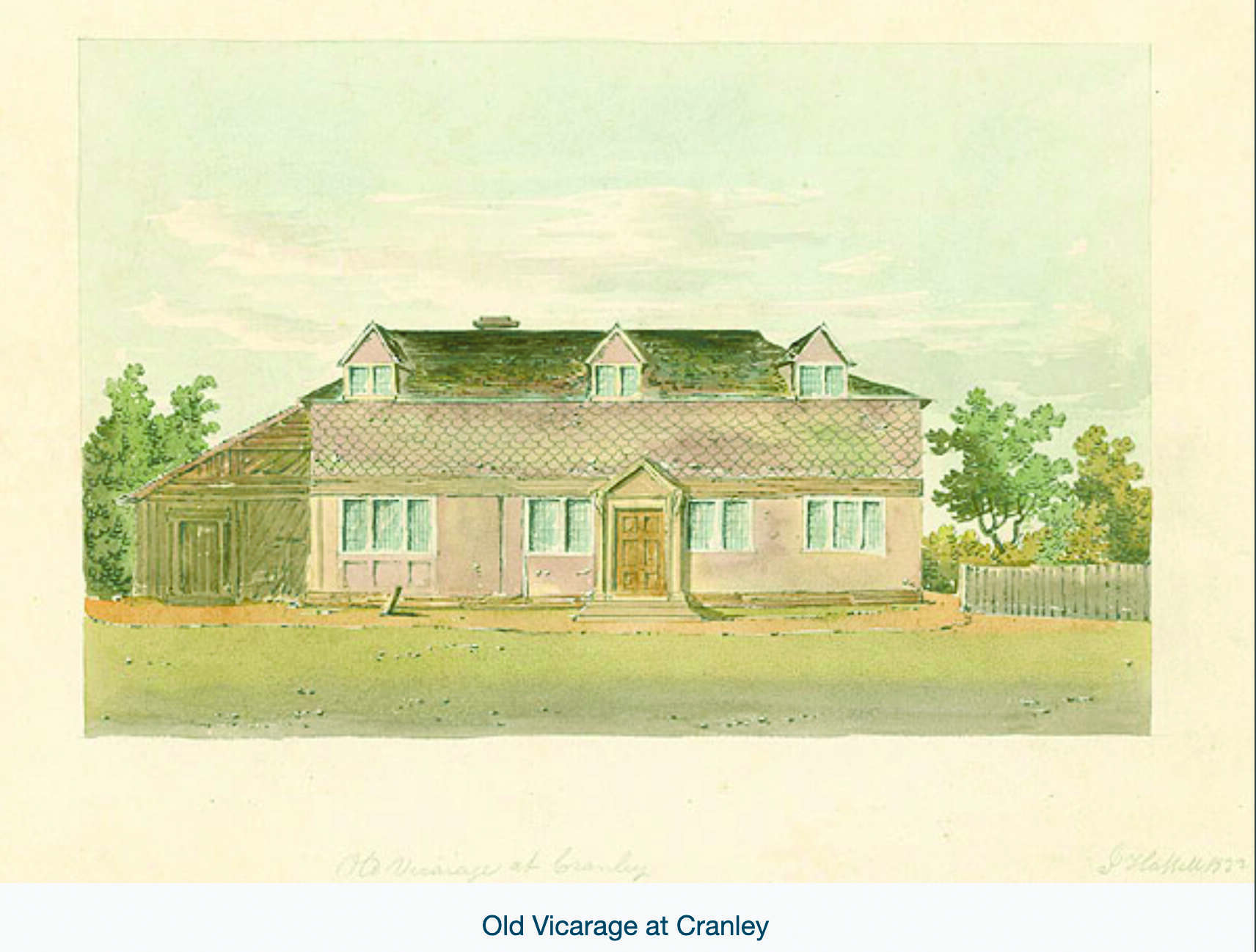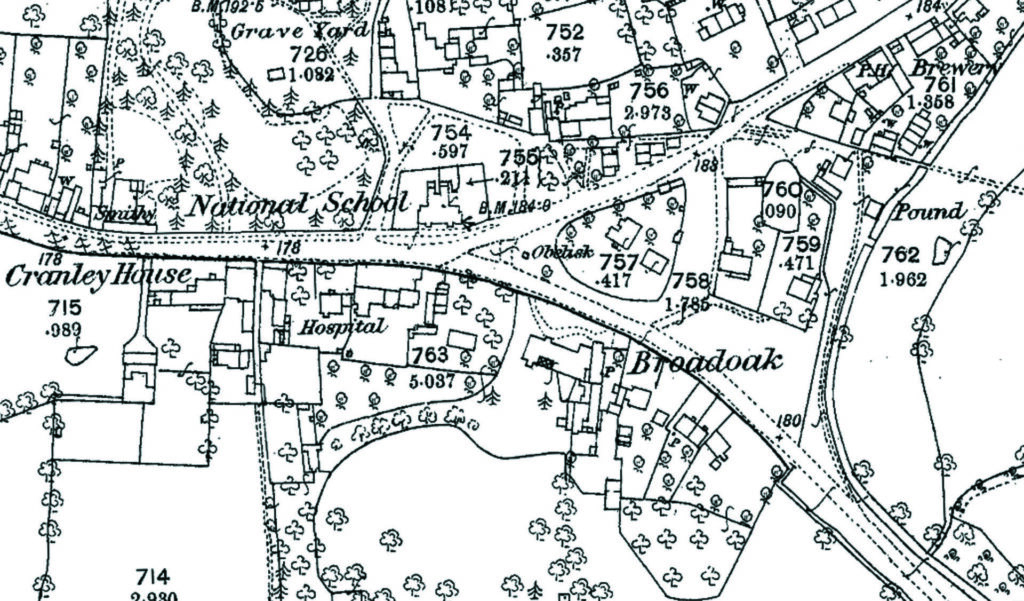
Whilst we wait patiently for the outcome of the National Lottery Heritage Fund grant application, we have been looking further into the history of the Cottage. Although we have found little definitive about the early history of the cottage and who had it built, it does seem to have been associated closely with St Nicolas Church.
This painting of The Old Vicarage in 1822 would seem to be an early rendition of the old hospital cottage and parish records indicate that it was being used by the church for visiting curates. It is remarkably similar to the current building with the three dormer windows, lean-to to the left and triple window to the left. The changes to the rest of the ground floor can be attributed to the need to gain better access for both patients and equipment. Looking at the roof timbers as they are today, it would appear that this is not an accurate rendition of the height of the roof. It hasn’t dramatically changed since it was built over 500 years ago.
Ordinarily, the housing provided by a church organisation is a rectory, never a vicarage, so the existence of a vicarage house in Cranleigh is puzzling, particularly as there was also a rectory house just across the road by the church. How long the name was attached to the house is unknown. It is likely that it came about during the eighteenth century when absentee rectors employed curates to administer to the needs of the parish. In a sense they had a similar subservient position to that of a vicar but without the formal structure and without the requirement to be approved by the bishop. They received no income from the tithes: they were simply employees of the rector and, as such, there was often quite a fast turnover of curates passing through parishes where this arrangement prevailed. In this situation it would seem that ‘Vicar’ was a courtesy title and the name of the ‘Vicarage House’ was an informal one.
In 1859 the Vestry meeting, which was the forerunner of the parish council, refers to the creation of Cranley Cottage Hospital from 1859 in the vestry minute book but it says nothing about the building itself nor any indication about the nature of its ownership.

Apparently, there was a falling out between the good doctor Napper and the Reverend Sapte about who first had the idea of a village hospital and could claim the credit. However, in the booklet “History of Cranleigh Village Hospital”, published 1937, the following is recorded: “Whether Napper or Sapte first got the idea – it was by putting their heads together that the CVH (Cranley Village Hospital) opened to patients on November 28th 1859 and the rector was able to offer the Old Vicarage at a nominal rent of £10 [which was] never claimed in the first 30 years”. The booklet also states that “Local antiquarians date this cottage as fourteenth century (since revised to fifteenth century) and it was known as the Old Vicarage. The original structure stands today with slight interior alteration”. The continuing ownership of the cottage by the church is confirmed in the 1860-1 Poor Rate Book, where the Reverend J H Sapte is listed as both owner and occupier of the hospital in Cranley Street.
In the 1870 edition of The Imperial Gazetteer of England & Wales, Cranley is referred to as a village, a parish, and a sub-district in Hambledon district in Surrey. Its station on the Guildford and Horsham railway is noted as is its post office “under Guildford” and a fair being held on Whit-Tuesday. At the time the population was 1393, housed in 280 dwellings, quite a difference from today! The following map shows the Hospital, opposite the National School, within the eastern part of Cranley in 1870.
Scan the QR code
Visit our website
www.cranleighheritagetrust.org.uk
or contact us at Email :











